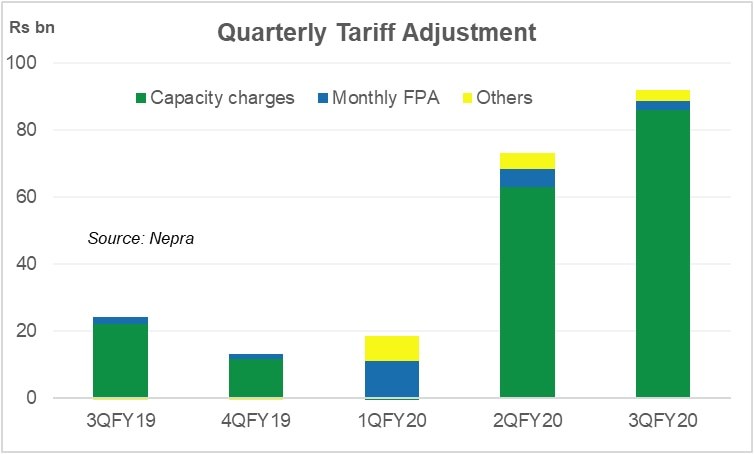The power regulator finally decided on the quarterly tariff adjustments pertaining to 2Q and 3Q FY20 – and the ball is now in the government’s court to notify the same in the official gazette. In all likelihood, the government shall announce the tariff adjustments with effect from today i.e. October 1, 2020, for amount of Rs165 billion to be collected over the next 12 months.
Nepra has worked out the two quarters’ adjustment at Rs1.62 per unit – the highest for any half year period. Although there is no official word yet from the government whether there is a shift in the power freeze policy, there have been hints that the government is finally ready to move on with some rationalization steps. The clubbing of FPAs spread over seven months, earlier was an indication in that direction.
Now that the adjustments are likely to become effective, expect hue and cry from all corners, telling how the price adjustment is akin to IMF’s slavery. But one must not lose sight of the fact that effective today, two previous adjustments pertaining to the four quarters of FY19 will cease to exist from the tariff structure of distribution companies.

Combined, this is a lapse of Rs1.82 per unit from the consumer tariff on account of 1HFY19 and 2HFY19 adjustment, effective from October 1, 2020. Take into account Rs1.62 per unit decided by Nepra and to be notified by the government, the consumer tariff will actually have gone a slight reduction from last month. Point is, the adjustment needs to be read, understood, conveyed and reported, in the same light. This is not a 12 percent increase in tariffs.
Now, on to the composition of adjustment. Capacity charges make up 90 percent of the Rs165 billion adjustments. The capacity payments in the first three quarters of FY20 have totaled Rs600 billion – very close to the full year amount of Rs644 billion billed in FY19. In all likelihood, the capacity charges would be nearing Rs850-900 billion by the end of FY20 – an increase of 30-40 percent year-on-year.
What makes matters worse is that the capacity charges in unit terms have risen faster as power demand has refused to increase. The high T&D losses make matters worse as 17-18 percent units continue to be lost, increasing the capacity payments on unit basis. It is imperative that the authorities seriously chalk out plans to increase electricity consumption from the grid, taking small steps towards affordable energy.

Negotiating with the IPPs and following it up with government-owned projects and then expanding it to CPEC power plants – is a good start, but this should not be the only one. Efforts to make power more affordable can and should be made simultaneously. There is no such thing as “one step at a time” to tackle the mess as big as Pakistan’s energy sector.
Concrete efforts to increase collection, reduce losses, strengthen transmission, sustain generation mix, negotiate with power producers, forecast realistically, privatize discos, automate tariff adjustments, unbundle the market, are all important. And none more than the other. Focusing solely on revenue measures, never has and never will deliver the desired results.























Comments
Comments are closed.